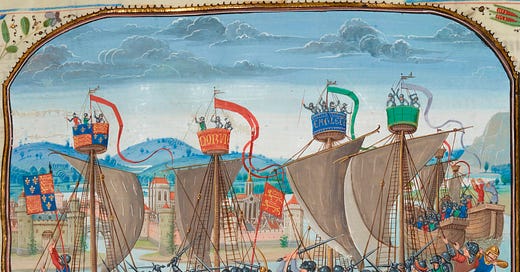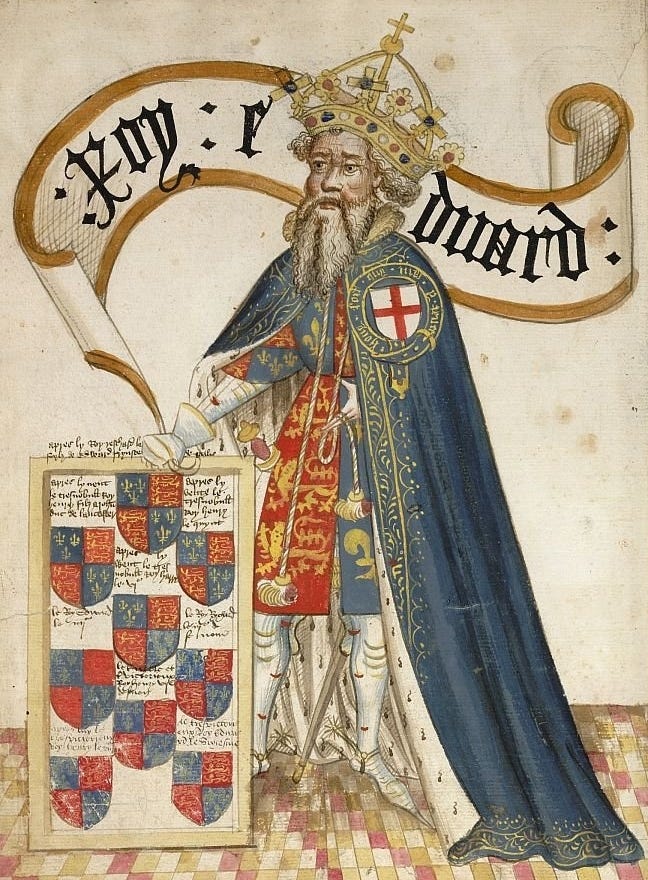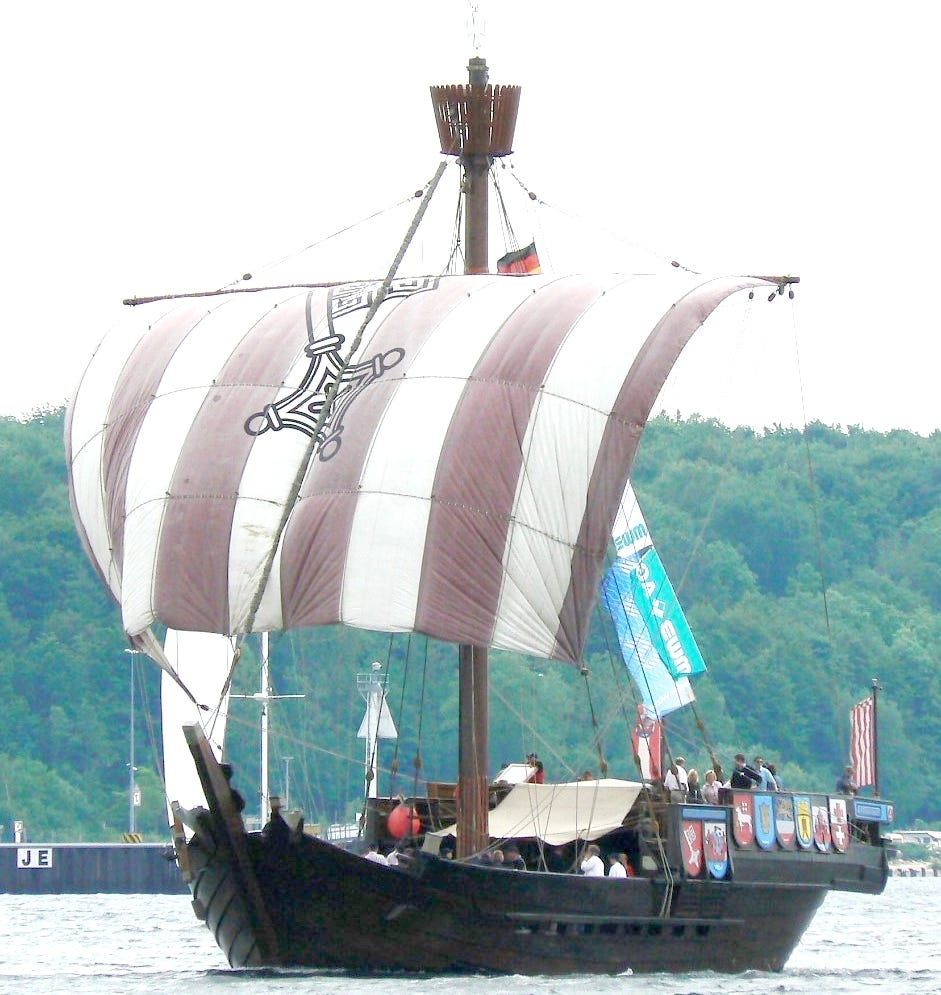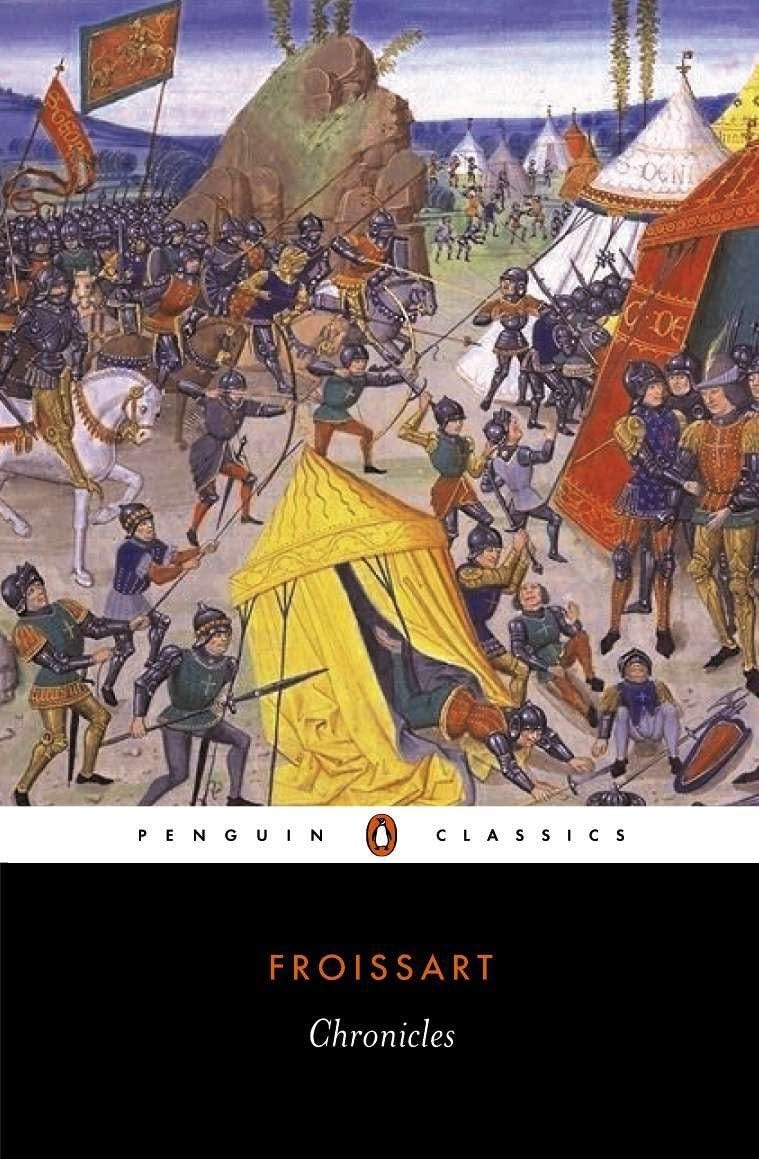#OTD in 1340 the naval battle of Sluys was fought off the coast of Flanders (now spelled ‘Sluis’ and part of the Dutch region of Zeelandic Flanders). This was a victory at sea for the English, commanded by Edward III, against a French fleet led by the Admiral of France, Hugues Quiéret.
The context of the battle was Edward’s military alliance with Flanders against France. Edward had intended to sail up the River Zwin to Bruges to link up with his Flemish allies; a repeat of the strategy of his grandfather, Edward I, in 1297. Once their forces were joined, the Anglo-Flemish army would embark upon a land campaign.
Or, at least, that was the plan. Edward’s plans were hampered by delays, caused by the reluctance of merchant ship owners to supply cogs for his expedition. This was the result of his failure to compensate owners for the requisition of ships. There were also concerns at Edward’s decision to personally lead the expedition. At a stormy meeting of the Council, the king abused his critics and remarked scornfully:
“Those who are afraid can stay at home!”
Meanwhile the French adapted their strategy. Instead of raiding the southern coast of England, they sent a fleet to blockade the port of Sluys and prevent the English from landing.
The French fleet, rather grandly titled the Great Army of the Sea, comprised over two hundred vessels. These included 6 fast-moving galleys and 7 royal warships, although the bulk of the fleet was made up of merchant ships. Quiéret had about 19,000 men, although only 600 of these were men-at-arms. He also had a large number of crossbowmen.
Edward’s navy was smaller, and mainly consisted of merchant ships, which he had eventually managed to extract from their owners. He had three warships, including his flagship Thomas of Winchester, and between 120-150 vessels in total. Most of these were transports, carrying 1300 men-at-arms and 1000 longbowmen. It seems the French heavily outnumbered the English, although Edward had twice as many ‘professional’ soldiers.
The French adopted standard defensive tactics, arranging their fleet into three lines, one behind the other, stretching across the estuary of the Zwin. Their ships were bound together with chains and ropes, “like a line of castles”. Their battle-line must have looked impregnable, but it alarmed Pietro Barbavera, the commander of the French galleys. He warned his chiefs that the fleet lacked manoeuvrability, and would be a sitting duck for the English archers. His advice was swept aside by the French commanders, who despised Barbavera as a mere commoner and pirate (he had, in fact, learned his trade as a corsair in the Mediterranean).
The course of the battle is difficult to piece together. Of the available contemporary sources, Edward’s own report is of great interest. In a letter written to the Archbishop of Canterbury, he claimed to have caught the French by surprise. This surprise attack threw the enemy into confusion:
“…by the arduous attack which we followed, they were put completely in ruin, so that we and our ships were most able to prosper from the peril of this great confusion.”
The king’s version of events is supported by Geoffrey le Baker, an English chronicler. He wrote that Edward quickly prepared his men and attacked ‘after the hour of nine’, with the wind and sun at his back and the English fleet divided into three lines. Another English writer, Thomas Otterbourne, claimed the French did not see the enemy coming until it was too late.
There was much brutal close-quarter fighting as the opposing ships boarded each other. Edward himself was wounded by an arrow or crossbow bolt in the thigh, and was praised for his courage by English and Flemish chroniclers. The French tactic of chaining their ships together proved disastrous, as it enabled the English to isolate single ships, or small groups, and overwhelm them before moving onto the next. Some modern historians argue the English lured the French out of line with a feigned retreat, a standard ruse in land warfare.
Contemporary English sources agree that Edward owed his victory to the famous longbowmen. At least four English chroniclers state the vital contribution of the archers, and repeat almost the exact same phrase - “Wherefore, God favouring them, the French and Normans were conquered harshly by the English archers.”
Overall, it seems the English swept the decks of French ships with massed archery, before closing in to finish off the survivors. Unlike land warfare, there was very little mercy shown. Jean Froissart, an important source, makes this comparison:
“This battle which I describe for you was very foul and very horrible; battles and attacks at sea are longer than those on land, because one is unable to flee, or to retreat. So they agree to defend and to sell and to demonstrate their prowess.”
Unlike English writers, Froisssart also mentions the Flemings, who joined in the battle when they saw the English were winning. These men had been summoned from Bruges and the nearby villages, and came out in a fleet of ‘boats and barges and large Spanish vessels’ to help their allies.
Keep reading with a 7-day free trial
Subscribe to House of Plantagenet to keep reading this post and get 7 days of free access to the full post archives.






